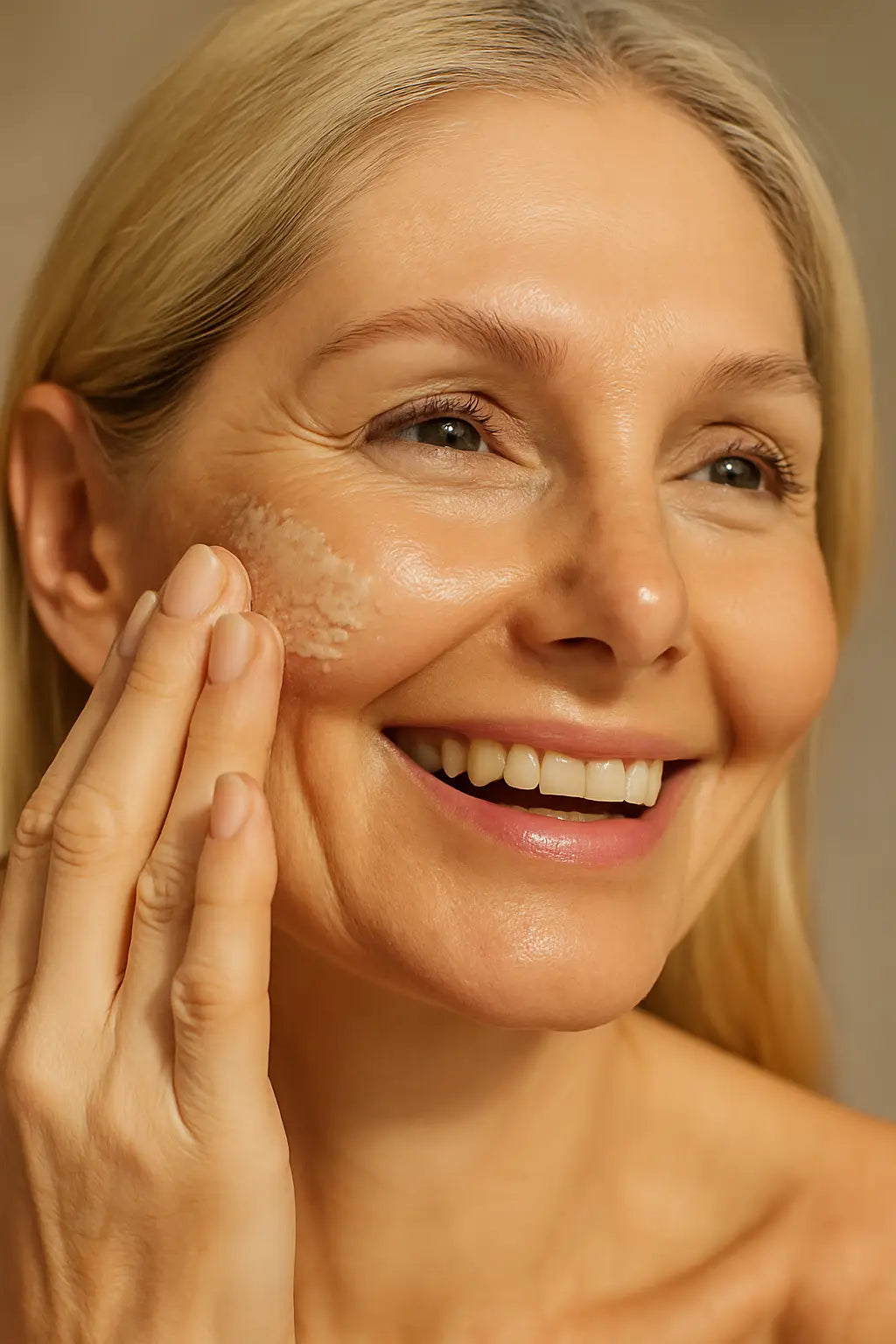
Gentle Exfoliation: Your Spring‑Skin Reset
|
|
Time to read 2 min
|
|
Time to read 2 min
Spring arrives—and your skin knows it.
That sudden mix of flaky cheeks and a shiny T-zone? It’s not your imagination. After months of indoor heating, cold winds, and heavy creams, skin often feels sluggish, uneven, and in need of a reset.
According to dermatological studies, our cell turnover naturally slows during colder months, leading to dullness, congestion, and poor absorption of your favourite serums.
This is where exfoliation comes in—but only if it’s done kindly.
When seasons shift, so should your skincare.
Winter often leaves behind layers of dead skin, increased dehydration, and a slightly compromised barrier (thanks, indoor heating). But jumping straight into strong acids or scrubs? That’s where many go wrong.
Spring exfoliation should focus on micro-renewal —gently removing what no longer serves your skin, without compromising its natural defences.
The goal: to support fresh skin with the least amount of irritation.
Not all exfoliants are created equal—and that’s a good thing. The key is knowing which method suits your skin's current state. Here's your personalised guide.

You don’t need to exfoliate every day. In fact, the real key to spring exfoliation isn’t frequency — it’s flexibility. Your skin’s needs can change with the weather, your cycle, or even your stress levels. So instead of following a rigid schedule, tune in and adjust.
If your skin leans dry or sensitive, starting with 1–2 times a week using a gentle enzyme or PHA-based exfoliant can help lift dullness without stressing your barrier.
For combination or normal skin, 2–3 times per week with a powder or AHA exfoliant is often the sweet spot.
And if your skin is oily, congested or resistant? You might benefit from exfoliating up to 4 times weekly — just be sure to alternate methods and observe how your skin responds.
Still unsure? Use your skin’s own signals as a guide:
If your skin feels tight or stingy after cleansing, it’s asking for hydration — not exfoliation.
If redness or irritation lingers post-exfoliation, pull back and rebuild with barrier support.
What comes after exfoliation matters just as much as the exfoliation itself. Always follow with a deeply hydrating serum and seal it in with a moisturiser designed to comfort and repair.
When in doubt, think of exfoliation as a conversation with your skin — not a command.
Let’s clear up a few common misconceptions that could be quietly sabotaging your glow.
Myth 1: You can exfoliate and use retinol on the same night.
You can—but only if your skin is strong, well-hydrated, and your professional gives the green light. Most of the time, alternating nights is safer for your barrier.
Myth 2: A little scrub will help with windburn or sunburn.
Actually, exfoliating compromised skin can make inflammation worse. Focus on barrier repair first—then come back to your exfoliant once things have settled.
Myth 3: SPF is optional after exfoliating.
No. Your skin is more vulnerable post-exfoliation, even if it doesn’t feel it. Always apply broad-spectrum SPF in the morning, no matter the season.
Can I exfoliate in the morning of an event?
Yes—but stick to gentle options like Daily Milkfoliant and always follow with hydration and SPF.
Can I use retinol the same night?
We recommend alternating nights or spacing out by 30+ minutes and buffering with moisturiser.
Why do I purge?
If breakouts occur after introducing a new exfoliant, it could be a temporary purge. Give it 2–3 weeks—if it worsens, pull back and consult.
Here’s to a smoother, brighter, barrier-happy spring—one gentle polish at a time.